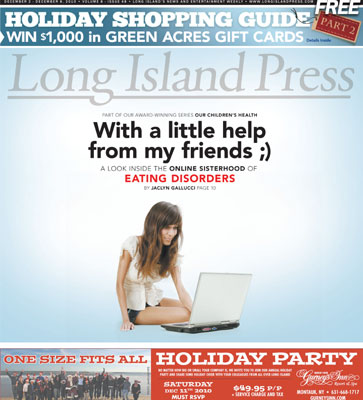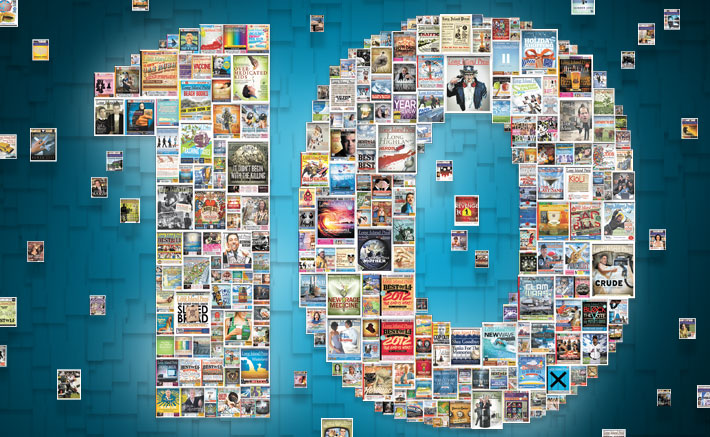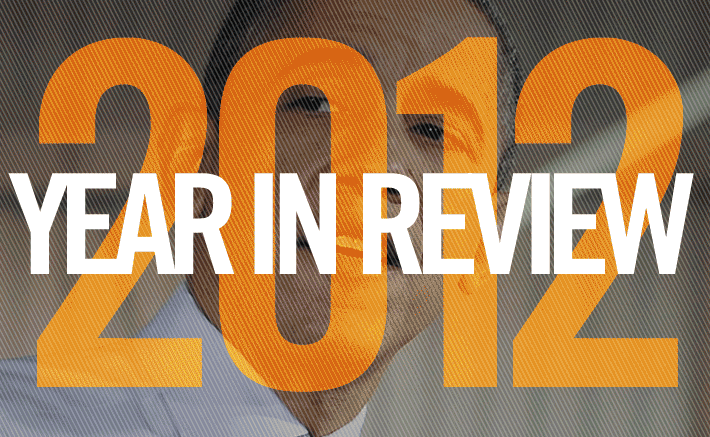
 It’s 6 a.m. and Rachel is on mile five.
It’s 6 a.m. and Rachel is on mile five.
At 5’2” and 87 pounds she is at least 20 lbs underweight by medical standards, but she’s only halfway through her morning exercise routine.
“When someone says, ‘I’m starving,’ or ‘I haven’t eaten all day,’ and you know you saw them have a piece of chocolate in the morning and all I’ve had was water for the past two days, it makes me enraged,” she says.
On the Internet other girls admire her profile picture. It was taken on an angle under a bright light that makes her blond hair and blue eyes almost reflective and her skin a perfect even tone of unearthly white.
She looks like an angel, they say.
But that picture doesn’t show the bald spots on Rachel’s head where her hair is falling out, nor does it show the thick hair that is growing on her arms or how cold her skin feels. It doesn’t show her brittle nails or the bite marks on her hand, the cavities in her teeth or the bruises on her body that just seem to appear out of nowhere.
For Rachel, 18, there is no upcoming event that is luring her onto the treadmill so early in the morning. There is no dress she has to fit into, no boy she is trying to impress—just the insinuation that there might be makes her very, very angry.
She’s an honor student in her first year of college, who, on average, spends more than 40 hours with a second family she has never met face to face. Rachel has been a regular member of an online eating-disorder support group for the past three years, along with more than 4,000 other members of all ages, but mostly in their teens and early 20s, from nearly every part of the world. It’s run by seven people and divided into sections by topic like “Fasting” or “Binging.”
Eating-disorder-related sites have been growing steadily over the past decade—a 2007 study by Optenet, a Web security firm, showed a 470 percent increase in these sites over the course of one year—ever since they first began appearing on talk shows like The Oprah Winfrey Show in the late ’90s.
Pro-anorexia (pro-ana) websites are those that promote anorexic behavior, where members freely exchange tips like how to purge. They are often portrayed by the media as secretive, cult-like, militant groups who worship photos of models and celebrities altered into, literally, skeletal figures; with creeds that include rules on eating similar to The 10 Commandments and a commitment to a disorder that borders on religion and rituals rivaling torture methods.
But the site Rachel belongs to “isn’t like that,” she says. It’s considered a “support group.” And to its thousands of loyal members—who are all female except for one or two men—support groups are completely distinct from pro-ana sites.
“Pro-ana sites don’t care about you,” says Rachel. “You can go there, and they will teach you how to be a great anorexic or the best way to throw up. That isn’t allowed at my site. We won’t teach you anything, and if it looks like you are here trolling for diet tips, you get kicked out.”
Support sites distinguish themselves from pro-ana sites by implementing strict rules against teaching, exchanging tips and promoting outright dangerous behaviors. And they distinguish themselves from recovery sites—sites for those trying to overcome their eating disorders—by not being judgmental, allowing open talk about eating-disorder behaviors and allowing people who may have no plans of recovery to meet others who are likeminded.
With mounting pressure from recovery sites and medical professionals, both Yahoo and Geocities now refuse to host sites they believe glamorize eating disorders. But this often doesn’t include eating-disorder sites considered support groups. Although to medical professionals and eating-disorder associations, the differences between the two are merely semantics—the difference between using the word “tips” or the word “advice”—and any real differences aren’t significant, except in the eyes of those with the disorder.
“These sites provide no useful information on treatment but instead encourage and falsely support those who, sadly, are ill but do not seek help,” the National Eating Disorder Association warns. “Media coverage of pro-ana often triggers the already-anorexic by mentioning weights and calorie counts and by showing photographs of thin people.”
We have purposely left out the names and details of the sites discussed, as well as their user names, because every person interviewed for this story found these websites through the media.
“One of the diagnostic criteria for anorexia nervosa is denial of the seriousness of the illness,” states the American Eating Disorder Association. “Thus websites that glorify anorexia as a lifestyle choice play directly to the psychology of its victims.”
But for many who visit regularly, these sites provide a special meeting place where they can find friends, all over the world, who understand them, no questions asked.






